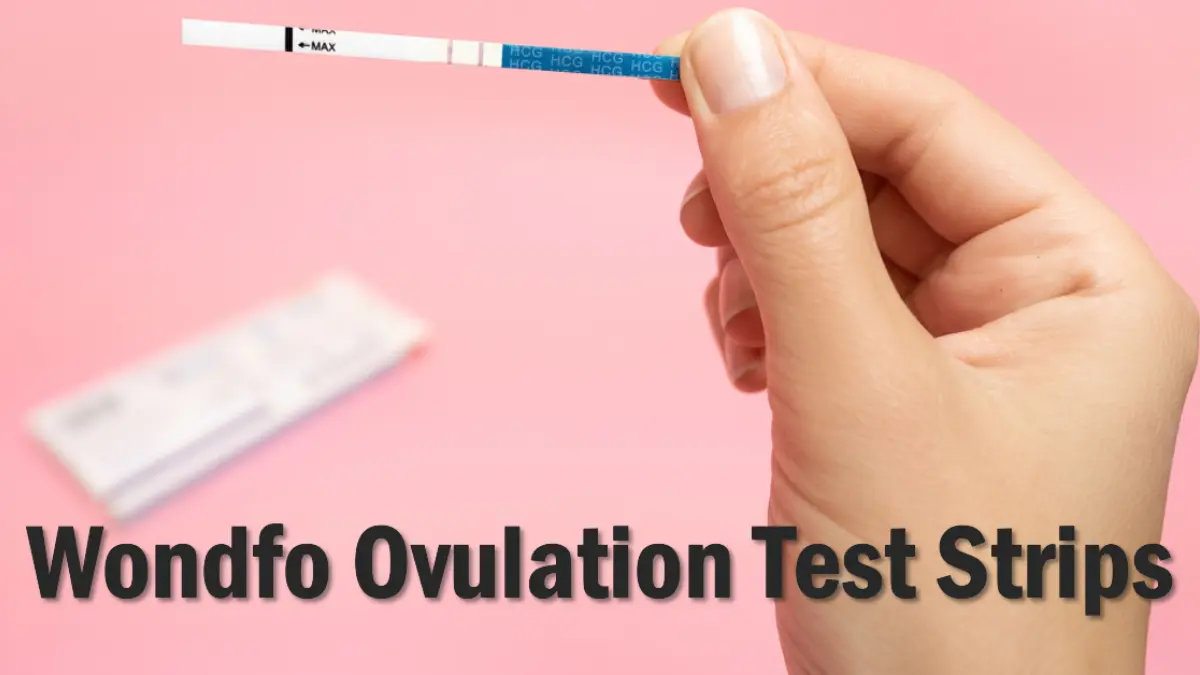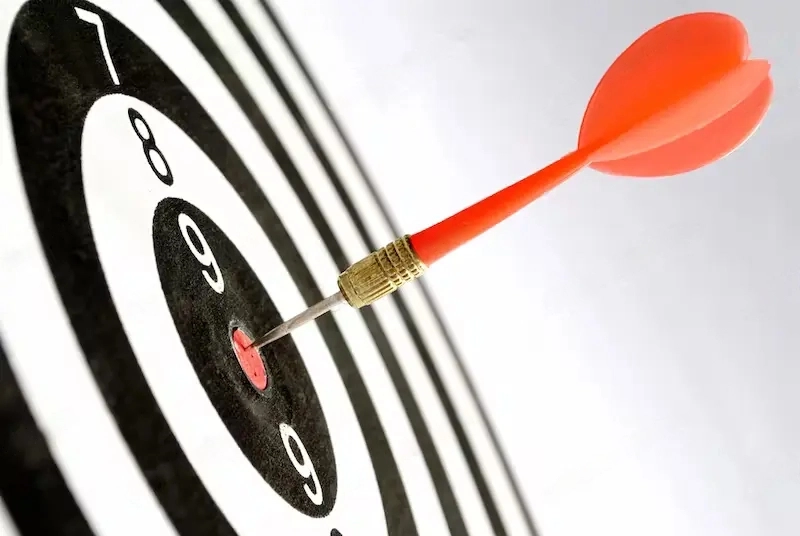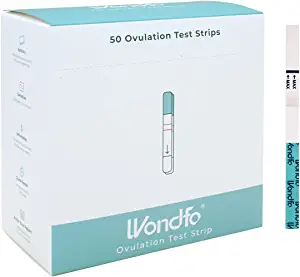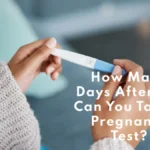
Looking to expand your family but don’t want to leave it all up to fate? Wondfo Ovulation Test Strips are here to help! These strips might not be able to predict the winning lottery numbers, but they can help you pinpoint your most fertile days with accuracy and ease. Whether you’re a first-time parent or a seasoned pro, these little strips will have you feeling like a fertility detective in no time. So let’s get cracking and discover how these strips can help you turn your baby-making dreams into reality!
What are Wondfo Ovulation Test Strips?
Wondfo is a Chinese company that produces a range of tests, including drug tests, tests for sexually transmitted infection, ovulation tests and pregnancy tests.
Wondfo Ovulation Test Strips work by detecting the surge in luteinizing hormone (LH) that occurs before ovulation. This LH surge triggers the release of the egg from the ovary, making it the ideal time for conception.
Wondfo ovulation test strips are designed to be easy to use and come with clear instructions. To use the test strips, a woman must collect a urine sample and then dip the test strip into the sample for a few seconds. The test strip will then display a result within a few minutes, indicating whether or not an LH surge has been detected.
Wondfo ovulation test strips are known for their accuracy and reliability. They are highly sensitive and can detect even small increases in LH levels. Additionally, they are known for being easy to read, with clear lines that indicate the test result.
One of the benefits of Wondfo ovulation test strips is their affordability. They are often less expensive than other brands of ovulation prediction kits, making them a popular choice for women who are trying to conceive on a budget. Additionally, they can be purchased online or in many drugstores, making them easy to obtain.
While Wondfo ovulation test strips are generally considered a reliable and accurate tool for predicting ovulation, it’s important to remember that they are not foolproof. False negatives or false positives can occur, so it’s important to use them in conjunction with other methods of tracking fertility, such as basal body temperature tracking or cervical mucus monitoring.
Related: Clearblue Fertility Monitor With Touch Screen (Review)
What are Ovulation Test Strips and How Do They Work?
Ovulation test strips are a popular tool used by many women who are trying to conceive. These test strips are designed to detect a surge in luteinizing hormone (LH) that typically occurs 24-48 hours before ovulation, helping women identify their most fertile days of the month.
To understand how ovulation test strips work, it’s important to first understand the menstrual cycle. The menstrual cycle is controlled by a complex interplay of hormones, including follicle-stimulating hormone (FSH) and LH, that are produced by the pituitary gland in the brain. FSH helps stimulate the growth of follicles in the ovaries, which contain eggs, while LH triggers ovulation, or the release of the egg from the follicle.
Ovulation test strips work by measuring the levels of LH in a woman’s urine. Typically, these test strips are used daily, starting around day 10 of the menstrual cycle, and continuing until a surge in LH is detected. When LH levels begin to rise, the test strip will display a positive result, indicating that ovulation is likely to occur within the next 24-48 hours.
It’s important to note that ovulation test strips are not foolproof, and some women may experience LH surges that are too low to be detected by the test. Additionally, other factors such as stress, illness, or certain medications can also affect LH levels, potentially leading to false positives or false negatives.
Despite their limitations, ovulation test strips can be a helpful tool for women who are trying to conceive. By tracking changes in their LH levels, women can identify their most fertile days and time intercourse accordingly, potentially increasing their chances of becoming pregnant.
Related: Fertility Diet: Know the Foods That Help You Get Pregnant
How Can You Determine Your Most Fertile Days of the Month Using Ovulation Strips?
To use an ovulation test strip, you’ll first need to collect a urine sample. This can be done either by holding the test strip in the urine stream or by collecting a sample in a clean, dry container and then dipping the test strip into the urine. Be sure to follow the instructions provided with your particular brand of test strips, as the exact method of use may vary.
After you’ve collected your urine sample, you’ll need to wait for the results. Most ovulation test strips will display results in the form of lines or symbols. The test line should appear darker than the control line if ovulation is going to occur. (If the test line emerges but is lighter or fainter than the control line, you are not ovulating yet because there are always low amounts of LH in your body. It is possible to completely avoid this mistake by using an ovulation test strip with a digital display.)
If you’re trying to conceive, knowing when you’re ovulating can be extremely helpful. Generally, ovulation occurs around the middle of your menstrual cycle, so it’s best to start using an ovulation predictor test a few days before that point. For example, if you have a 28-day cycle, take your first test on day 10 or 11. If your cycles are irregular, take the length of your shortest cycle in the last 6 months as a guide and begin testing three to four days sooner than the midpoint of your shortest cycle.
It’s common to test for a few days before you detect a surge in LH, or luteinizing hormone, which is normal. Most kits come with five to 10 test strips, and some even have a digital reader that can compare your current hormone levels with those of previous days, making it even easier to determine when your LH is surging.
To get the most accurate reading, it’s important to follow a few pointers:
- Use an ovulation test strip between 12 p.m. and 8 p.m. because most women experience a surge in LH in the morning, and levels can be detected in your urine about four hours later. If you want, you can test twice a day, once between 11 a.m. and 3 p.m. and again between 5 p.m. and 10 p.m. It’s crucial to test at the same time (or times) each day, regardless of whether you test once or twice.
- Ensure your urine is concentrated enough. Refrain from urinating for an hour or two before the test, and avoid drinking large quantities of fluid.
- Carefully follow the package instructions. The closer you adhere to the manufacturer’s instructions, the more likely you are to receive accurate results.
Once the test indicates that your LH levels are increasing, it’s best to start having sex that day. It’s recommended to continue having sex for two to three days afterward since ovulation can occur within 36 hours of LH levels rising.
Related: Top 19 Obstetrical Complications
What is the Right Time to Take the Test?
| Cycle Length | Day of Cycle to Begin Testing |
| 21 days | Day 4 |
| 22 days | Day 5 |
| 23 days | Day 6 |
| 24 days | Day 7 |
| 25 days | Day 8 |
| 26 days | Day 9 |
| 27 days | Day 10 |
| 28 days | Day 11 |
| 29 days | Day 12 |
| 30 days | Day 13 |
| 31 days | Day 14 |
| 32 days | Day 15 |
| 33 days | Day 16 |
| 34 days | Day 17 |
| 35 days | Day 18 |
| 36 days | Day 19 |
| 37 days | Day 20 |
| 38 days | Day 21 |
If your cycle is shorter than 21 days or longer than 38 days, consult a physician
How Reliable are Ovulation Test Strips?

Studies have shown that ovulation test strips can be fairly accurate in predicting ovulation 97% of the time. In fact, some studies have found that ovulation test strips are just as accurate as ultrasound in detecting ovulation.
However, the accuracy of ovulation test strips can be impacted by several factors. Firstly, the timing of testing can affect the accuracy of the results. It is essential to test at the same time every day, preferably in the morning, as LH levels tend to be highest in the morning. Testing at the wrong time can lead to inaccurate results. Similarly, missing a test or not following the instructions correctly can also lead to false results.
Another factor that can affect the accuracy of ovulation test strips is the sensitivity of the test. Some test strips are more sensitive than others, which means they can detect lower levels of LH. A more sensitive test strip may be better for women with irregular cycles or those who have a shorter LH surge.
Furthermore, certain medications can interfere with the accuracy of ovulation test strips. Women taking fertility drugs, for instance, may experience higher-than-normal LH levels, which can result in false positives. Similarly, women with conditions such as polycystic ovary syndrome (PCOS) may have higher LH levels throughout their cycle, which can also impact the accuracy of the test.
What are the Prices of Ovulation Test Strips, and are They Covered by Insurance?
The cost of ovulation test strips can vary depending on several factors. The brand, sensitivity, and number of strips in a package can all impact the price. Typically, a pack of ovulation test strips with 50 or more tests can cost anywhere from $20 to $50. Some brands also offer digital ovulation tests, which are slightly more expensive than traditional test strips.
Although ovulation test strips are available over-the-counter, they are generally not covered by insurance. This is because they are considered a “fertility aid” rather than a necessary medical treatment. However, it’s always a good idea to check with your insurance provider to see if they cover any type of fertility testing or treatment.
If the cost of ovulation test strips is a concern, there are a few things you can do to save money. First, consider purchasing test strips in bulk. Many retailers offer discounts when you buy multiple packages at once. Second, consider using a fertility tracking app or website that offers free or low-cost ovulation prediction. Finally, consider talking to your healthcare provider about other fertility testing or treatment options that may be covered by insurance.
Related: Ovulation Test: Learn How it Works and Know the Best 9 Brands
Are There any Drawbacks or Risk Involved with Utilizing Ovulation Strips?
One potential downside of using ovulation test strips is the cost. As we discussed above, the cost of these test strips can add up over time, and they are generally not covered by insurance. This can be a financial burden for some women who are already trying to conceive.
Another downside of using ovulation test strips is the potential for false results. While ovulation test strips are generally accurate, they are not foolproof. There is always a chance of receiving a false negative or false positive result. Particularly if you have PCOS or are taking specific drugs, a test might possibly show a false positive if LH levels spike without ovulation taking place. This can be frustrating for women who are trying to conceive, and it can also lead to unnecessary stress and anxiety.
Moreover, relying solely on ovulation test strips to track fertility can lead to missing the optimal window for conception. Ovulation test strips detect the surge in luteinizing hormone (LH) that occurs before ovulation. However, the LH surge can vary from cycle to cycle, and not all women will experience a surge before ovulation. Therefore, it’s important to consider using other methods of tracking fertility, such as basal body temperature tracking or cervical mucus monitoring.
There are also a few risks associated with using ovulation test strips. One risk is the potential for vaginal infection or irritation. Some women may experience irritation or infection when inserting the test strip into the vagina to collect urine. Additionally, using ovulation test strips too frequently can also lead to irritation or infection.
Product Details
Test Type: LH-only test strips
Quantity of Tests: 50
Time it Takes: –5 minutes
Who it’s Best for: Experienced ovulation test users
FDA Approved: FDA/CE/FSC approved
Amazon Customer Reviews: 4.5 out of 5
1.) I tried many ovulation trips and I love this one. Lines are shown quickly and instructions are easy.
2.) Wondfo on top, Easy @ Home on bottom.
Wondfo never lets me down. The lines are always solid, never streaky, and dark enough to read easily. I struggled with LH testing for years until I got Wondfo. The only brand I trust.
Pros
- Inexpensive
- Good for those with irregular cycles
Cons
- Don’t accept returns if defective
- May be difficult to interpret
Wondfo Ovulation Test Strips

Home Test Kit
- Over 99% Accurate
- Easy to Use Design
- Quick and Reliable Result
- Value Pack Design
Frequently Asked Questions
What is the Wondfo Ovulation Test Strip used for?
The Wondfo Ovulation Test Strip is a tool used to detect a surge in luteinizing hormone (LH) in urine, which occurs one to two days before ovulation. By using the test strip, women can identify the best time to try to conceive.
How Accurate are the Wondfo Ovulation Test Strips?
When used correctly, Wondfo Ovulation Test Strips are 99% accurate. They have a sensitivity of 25mIU/mL, which means they can detect even low levels of LH in your urine. However, like all ovulation tests, there is a possibility of false positives or false negatives. It is important to follow the instructions carefully and to test at the same time each day for the most accurate results.
How Long Does it Take to Get Results with Wondfo Ovulation Test Strips
Typically, it takes a few minutes to get results with Wondfo Ovulation Test Strips. The specific time frame can vary depending on the instructions provided by the manufacturer and the individual’s specific testing process. It is important to read and follow the instructions carefully to ensure accurate results.
How do Wondfo Ovulation Test Strips work?
Wondfo Ovulation Test Strips work by detecting the presence of luteinizing hormone (LH) in your urine. LH is a hormone that surges 12-36 hours before ovulation, indicating that your body is preparing to release an egg. By testing your urine with a Wondfo Ovulation Test Strip, you can detect this LH surge and predict when you are most fertile.
When Should I Start Using Wondfo Ovulation Test Strips?
The ideal time to start using Wondfo Ovulation Test Strips depends on the length of your menstrual cycle. For most women, testing should begin around day 10 of their cycle, but you may want to start earlier or later depending on the length of your cycle. You should test at approximately the same time every day, and continue testing until you detect a positive result or until your menstrual period begins.
How Do I Use Wondfo Ovulation Test Strips?
To use a Wondfo Ovulation Test Strip, you should first collect a urine sample in a clean, dry container. Then, dip the test strip into the urine, making sure the arrows on the strip are pointing downwards. After 10-15 seconds, remove the strip from the urine and place it on a clean, dry surface. Wait 5 minutes for the test results to appear.
What Does a Positive Wondfo Ovulation Test Strip Result Mean?
A positive Wondfo Ovulation Test Strip result means that the LH surge has been detected in your urine, indicating that ovulation will occur in the next 12-36 hours. This is your most fertile period, and you should plan to have intercourse during this time if you are trying to conceive.












